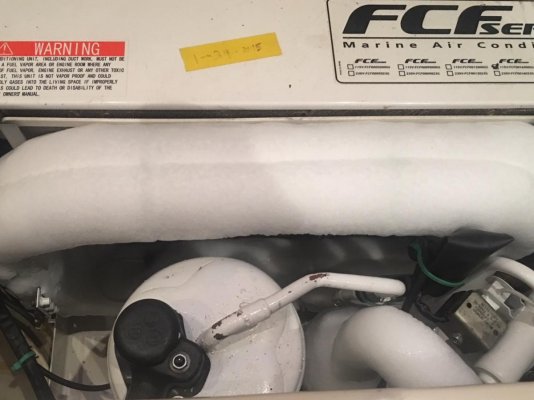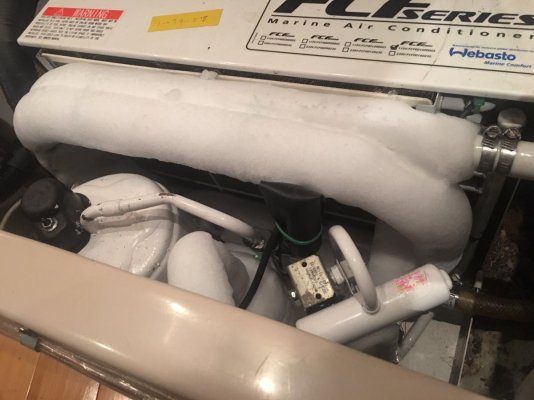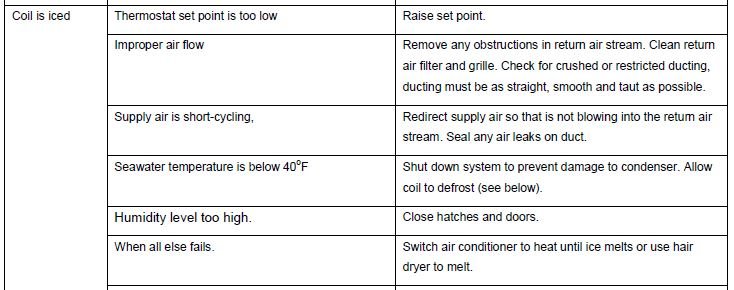toocoys
Guru
I'm cross posting this to get as many replies and advice as I can....
We have a Webasto FCF unit in our salon. It is a 110V, 16K btu unit and it was installed in January of 2015. It was installed under the settee and it has a recommended 120sq inch return air grill. It also has a 500gph pump, and has excellent water flow.
It ran pretty much non-stop this summer and cooled just fine. Never had an issue.
However, on reverse cycle heating, the coils freeze over. I first noticed it when it was running and there wasn't any water going through. I defrosted it and it worked again, however the condenser runs around 170 degrees.
I had an A/C tech out the other day and paid him $152 to tell me that he couldn't see anything wrong with it, and my two options were to have him pull it and run it at the yacht service's shop, or replace it. Since I wasted that money, its been heating and cooling fine, however I noticed a thick layer of frost on the coils again today.
Most people have told me that its low on refrigerant, however these units are not serviceable without tapping the lines and adding a valve. Additionally, it cools just fine.
Has anyone had this problem, and if so, what was the solution?
The photos are of the first time it froze over.
We have a Webasto FCF unit in our salon. It is a 110V, 16K btu unit and it was installed in January of 2015. It was installed under the settee and it has a recommended 120sq inch return air grill. It also has a 500gph pump, and has excellent water flow.
It ran pretty much non-stop this summer and cooled just fine. Never had an issue.
However, on reverse cycle heating, the coils freeze over. I first noticed it when it was running and there wasn't any water going through. I defrosted it and it worked again, however the condenser runs around 170 degrees.
I had an A/C tech out the other day and paid him $152 to tell me that he couldn't see anything wrong with it, and my two options were to have him pull it and run it at the yacht service's shop, or replace it. Since I wasted that money, its been heating and cooling fine, however I noticed a thick layer of frost on the coils again today.
Most people have told me that its low on refrigerant, however these units are not serviceable without tapping the lines and adding a valve. Additionally, it cools just fine.
Has anyone had this problem, and if so, what was the solution?
The photos are of the first time it froze over.





